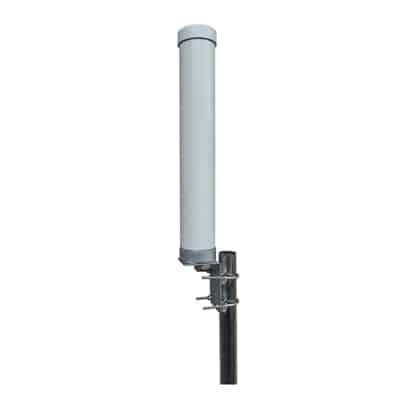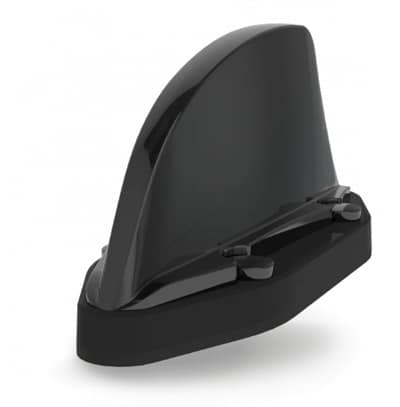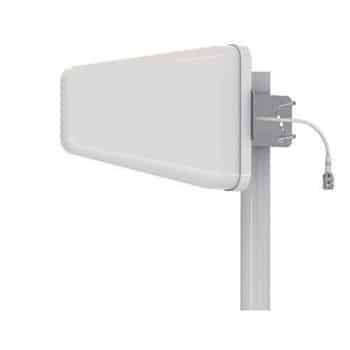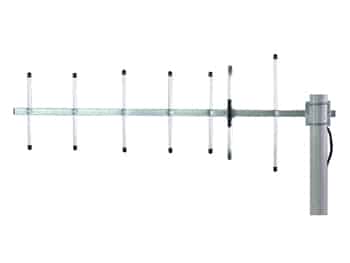LoRaWAN networks are becoming popular among different IoT applications and verticals hence it would be worthwhile to investigate on their usage, features, and operations. In this article, we will be discussing what is LoRa and LoRaWAN individually and the main difference between them. Next, we will discuss in detail how to realize LoRaWAN networks which are based on the LoRa RF modulation scheme. Finally, we conclude our article while identifying different potential applications of LoRa-based devices and their advantages over other available IoT communication protocols.
Table of Contents
ToggleWhat is LoRa?
LoRa stands for “Long Range Wide Area,” and is a popular radio modulation scheme in realizing low power and long-range radio communication. It is one of the most popular radio modulation schemes used for long-range Internet of Things (IoT) and Machine-to-machine (M2M) applications. Though LoRa, is being there for a while it is recently LoRa gained much popularity as the chipsets enabling LoRa radio modulation.
What is most important thing to remember is that LoRa refers to the physical layer or the radio physical layer, therefore, LoRa alone is not capable of realizing network operations and handling network traffic in IoT applications. The frequency range of operation of LoRa depends on the geographical location of implementation. For example, in the context of Europe, LoRa operates in 868 MHz while in North America it is 915 MHz Also, in line-of-sight (LOS) conditions, the communication link can be extended up to 10 km with LoRa radio modulation. However, it is noteworthy that LoRa uses a proprietary license-free radio spectrum.
What is LoRaWAN?
LoRaWAN, however, refers to the network facilities, which include network protocols and traffic management, which uses LoRa radio modulation to enable communication for a long range. LoRaWAN or LoRa Wide Area Network facilitates the network layer and thus, is mostly sought in industrial IoT applications. It is categorized under non-cellular LPWAN (Low Power WAN). In simple words, we can say LoRaWAN is a network using LoRa. It is maintained by LoRa Alliance, which enables devices to communicate wirelessly using LoRa.
The difference between LoRa and LoRaWAN
Having discussed separately LoRa and LoRaWAN, it is worthwhile to briefly highlight the major difference between LoRa and LoRaWAN. As forementioned, LoRa alone only facilitates physical facilities in communication, while LoRaWAN provides network layer capabilities providing the full-stack network architecture. LoRa was initially patented under Semtech, a French semiconductor vendor, whereas LoRaWAN was formulated by LoRa Alliance.
Accordingly, LoRa is simply a radio communication protocol enabling long-range operation while LoRaWAN is the network that uses LoRa protocol to realize LPWAN IoT applications.
LoRaWAN technology and architecture
Having a clear understanding of the difference between LoRa and LoRaWAN, we will now focus on each of the two approaches separately. To start with, we will focus first on LoRaWAN technology and its architecture.
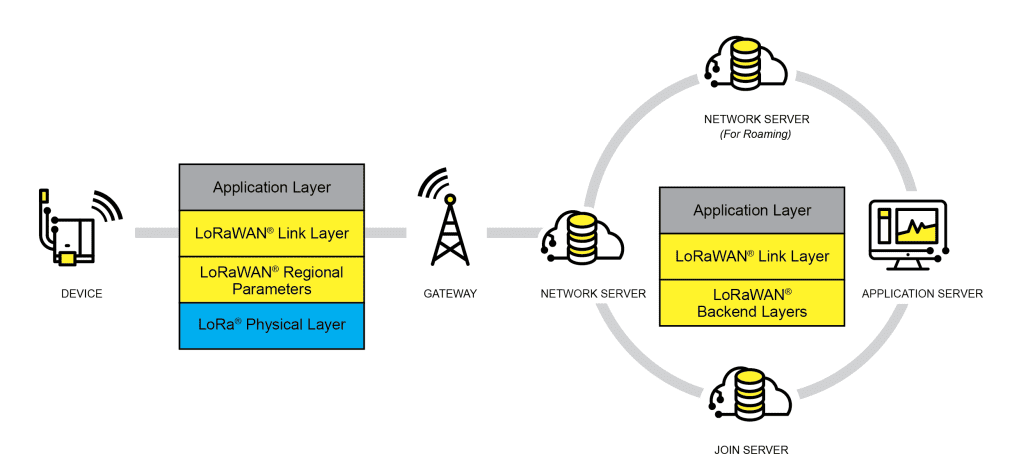
LoRaWAN network is deployed as star-of-stars network topology, where a central hub or node is responsible for handling the communication and interconnection in the network. A typical LoRaWAN network consists of the following components:
- Join Server
- Application Server
- Network Server
- Concentrator/Gateway
- End Nodes/Devices
1. Join Servers
Join servers are responsible for handling join requests send by end devices when joining the network via the network server. It is maintained as a piece of software in a server, which overlooks the over-the-air (OTA) activation of the end device, thus ensuring their secure activation. The activation process via the join server is initiated by the end device, by sending the uplink join-request frames to the join server. Then, the join server would signal the network server, as to which application server to be connected to the requested end device. This is communicated by downlink join-accept frames. Moreover, the join device is responsible for holding the following information about each end device in the network:
- End-device service profile
- DevEUI – This is a unique identifier for each end-device
- Appkey – This is the application encryption key
- NwkKey – This is the network encryption key
- Application server identifier
2. Application Servers
Application servers are responsible for handling sensor and application data send by the end devices. These data are then presented to the user interface to make decisions and interpret results based on them. The application server is also responsible for generating downlink payload information for the connected end devices which are routed through the network server. In a LoRaWAN network there can be more than one application server and any level of analytics and processing are carried on top of the application server. Machine learning algorithms, data processing techniques, and business analytics are some of the processes that may be carried out by the application layer.
3. Network Server
LoRaWAN network server (LNS) plays a key role in realizing and managing the entire network. There are some of the common features seen in network servers in all LoRaWAN networks. Some of the major features are:
- LNS is responsible for ensuring secure 128-bit AES encrypted connections for the communication of messages, thus providing end-to-end security
- Checking the authenticity and integrity of end devices connected to the network
- Checking the device address checking, for accurate message transportation throughout the network
- Employing Adaptive Data Rate (ADR) protocol to facilitate adaptive data rates thus, optimizing the data rate of end-devices
- LNS determines the best gateway for routing downlink messages to the end-devices
- Forwards join-request and join-accept messages between the end devices and the join server
- Forwarding uplink application payloads to the relevant application server and managing downlink payloads coming from different application servers which are then forwarded to the relevant end-devices
- Managing all MAC (Media Access Control) layer commands
- Managing all uplink messages which includes, their duplication, acknowledgment of proper reception
4. Concentrator/Gateway
Gateways or concentrators are devices responsible for receiving messages from the end devices and forwarding them to the network server. They are connected to LoRa-modulated radio signals on the downstream (i.e., to end devices) and to an IP-based connection on the upstream (i.e., to the network server). This upstream connection is backhauled by a cellular connection (4G, 3G, 5G etc.), Wi-Fi, Ethernet, or even by a Fiber-Optic connection. As the LoRaWAN gateways are not directly associated with end devices, they can receive information from multiple end devices. This makes gateways to receive duplicate data. However, this duplicate data is handled by the network server. The only functionality of the gateway with respect to the received data is to check their integrity by using different error detection schemes (e.g.: CRC). Gateways also measure the RSSI (Received Signal Strength Indicator) of messages coming from different end devices to help the network server to de-duplicate packets from multiple end devices. In the case of downlink communication, i.e., sending data from the network server to end devices, a gateway would simply pass the data to the target end device without any additional processing. LoRaWAN gateways are typical of two types:
- Indoor gateways: These are cost-effective solutions that are much more suitable for indoor locations where limited coverage is required. Usually, the antenna is built internally, however, depending on the requirement there can be externally built antennas as well.
- Outdoor gateways: These provide larger coverage and are usually mounted at a considerable height. They are also equipped with an external antenna.
5. End Nodes/Devices
The technology stack of LoRaWAN networks can be realized using a three-layer model which composes of:
- Application Layer
- MAC Layer
- Physical Layer
The Application layer is responsible for handling sensor data and sending commands to connected actuators. It also provides a user interface for a user to interact with the network.
MAC layer is responsible for establishing the connection between the LoRaWAN gateways and end devices. Device classes are determined in this layer which also includes different options for the designer to determine based on the application.
The physical layer is based on the LoRa RF modulation scheme and the modulated frequency is determined based on the regional ISM (Industrial, Scientific, and Medical) band.
What can Tesswave do for you?
Tesswave provide 100+ antenna products and you can contact us for antenna customized solutions, get in touch with us today to get a Free quote.
Get an Instant Quote
Get a FREE quote and we will contact you within an hour
LoRaWAN devices classes
LoRaWAN network devices are categorized into three classes depending on modes of operation:
- Class A
- Class B
- Class C
In the Class A mode of operation, an end device will send an uplink message followed by two short downlink message windows. Each downlink window is delayed by different delays from the end of the uplink message. Now the network server can only send a downlink message during these two receive windows, if it fails to do so, the next downlink transmission will be available after the next uplink transmission. Also, if the network server was able to send the downlink transmission during the first receive window, the end device will not open a second receive window. Class A devices are often battery-powered and would have a high downlink latency. They are most suitable for environmental monitoring and location tracking applications which encourage idle state of operation. All LoRaWAN devices must support Class A operation.
Compared to Class A devices, Class B devices provide scheduled receive windows. These scheduled receive windows are time-synchronized beacon messages transmitted by the gateway. This provides lower downlink latency when compared to Class A devices. The devices are expected to receive downlink messages in determined ping slots after receiving each beacon message from the gateways. However, a downside of the Class B mode of operation, is that now the device is in an active state for a considerable time, thus reducing the battery life of the device. However, Class B devices are used for both monitoring and actuating IoT applications. For example, they are used in utility meters and temperature-reporting applications.
Class C devices are ‘always’ listening to incoming downlink messages unless they are transmitting (uplink transmission). This makes them more power-consuming devices and is usually connected to mains power. However, a major advantage of Class C devices is that they impose low downlink latency when compared to their counterparts. Applications such as street lights and electrical meters with switches are some of the popular applications utilizing Class C devices.
LoRaWAN Network Security
Security is a major factor in the context of IoT applications which usually deal with sensitive information. The following are the major security measures observed in a LoRaWAN network:
- Join Procedure
- Message Authentication
- Device Commissioning
These network security measures ensure the protection of the network against third-party attacks and ensure the integrity of the connected devices without compromising valuable information. They also ensure manageable data traffic in the network given the resource limitation of the network.
The join Procedure is the procedure where the end devices are connected to the relevant application server by means of join server. Initially the end device would send a join-request to the join server, which would be authenticated by the join server. After proper authentication, the join server would send the join-accept message to the end device enabling the connection between the end device and the relevant application server. After the acceptance of the connection, both the end device and join server would generate individual session keys based on the metadata they received. The join server would share its session keys with the network and application servers. On transmission, data traffic is secured in two distinct levels of security. End-device would have a different 128-bit Application session key shared with application server which is different from the 128-bit AES Network session key shared with the network server. In this manner neither gateway nor network server can directly read user data transmitted between the end device and the application server.
LoRaWAN network inherits message authentication capability due to its MAC layer options which are authenticated at the gateway level before being transmitted to the network server. Moreover, device commissioning is mandatory in LoRaWAN networks. LoRaWAN networks provide two types of device activation:
- Over-the-Air (OTA) Activation
- Activation by Personalization (ABP)
User would have the flexibility to choose between either option, however, the preferred option is OTA.
LoRa Modulation
Throughout the article, we discussed the properties of LoRaWAN network, in this section we discuss briefly about the LoRa RF modulation scheme and some important properties of LoRa. LoRa is a proprietary spread-spectrum modulation scheme base on Chirp Spread Spectrum (CSS). LoRa is aimed at realizing low throughput and low data rate communication. Since it is based on CSS mechanism, by increasing the chirp rate, it is possible to increase the range of communication. Now since, the spreading factor is increased with the increase of the chirp rate, one would raise the question on the possible interference of the frequency components. However, LoRa uses orthogonality spreading of the chirps, avoiding collision of different frequency components. This also ensure robustness of LoRa signals making them immune to multipath fading. Immunity to multipath fading makes LoRa a suitable candidate as far as the urban environment is considered where multipath propagation is prominent. The bandwidth for LoRa is of 125 KHz or 500 KHz (for uplink) and 500 KHz (for downlink) and depending on region of operation this frequency spectrum changes.
LoRa Alliance
LoRa Alliance is an open and non-profit organization whose aim is to achieve massive IoT applications with the adoption of LoRaWAN networks which are based on LoRa RF modulation. LoRa alliance is collaborated with more than 150 LoRaWAN network operators globally with more than 500 companies, thus, ensuring global coverage. This makes LoRaWAN networks an interesting candidate for massive IoT applications in global context. A network coverage map showing current global coverage and current verticals with LoRa-based applications can be accessed via: https://lora-alliance.org/ .
Advantages and Disadvantages of LoRaWAN
LoRaWAN networks have become popular due to many reasons as they impose many advantages in the context of IoT and massive IoT applications. Some of the key advantage of LoRaWAN are:
- LoRaWAN networks consume low power, since LoRa-based devices are optimized for low power consumption
- LoRa-based devices have a long battery lifetime
- Due to the use of LoRa RF modulation based on CSS, LoRaWAN networks can expand to an extensive range. This is about 10 km in the context of rural environment and about 3 km in the context of urban environment
- With the presence of standardized bodies such as LoRa Alliance, LoRa-based devices are prominent globally making them easily accessible
- Inherent security features in LoRa-based devices are another advantage in LoRaWAN networks. These networks also employ 128-bit AES encryption techniques
Despite its attractive features, LoRaWAN networks are always not the best option. LoRaWAN networks are only capable of handling low data rates and can transmit low data samples at a given time. Therefore, we need to encode data types such as text in binary to be par with small payload capability of LoRaWAN networks. Moreover, LoRaWAN networks are not ideally suitable for handling real-time data as LoRa-based devices can send data in given time intervals.
When to use LoRa and LoRaWAN? (Applications)
LoRa and LoRaWAN are suitable for realizing IoT and massive IoT applications which would require the following characteristics:
- Low cost of implementation
- Low power consumption
- Lower bandwidth and small payload transmission
- Secure and long range of operation
These characteristics are prominent in areas such as:
- Smart parking applications
- Environment monitoring and utility metering applications
- Location tracking
- Street lighting
- Agricultural applications and livestock management
- Disaster prediction application such as earthquake prediction
However, LoRa and LoRaWAN networks are not the ideal candidate for applications such as connected homes and automated home applications where, real-time data processing and control of different actuators. LoRa-based applications are also not the best candidate for applications requiring higher bandwidths as to transmit images or videos.
Conclusion
In conclusion, LoRa is the RF modulation scheme which is the underlined physical layer in LoRaWAN network stack. Moreover, with the presence of standardized bodies such as LoRa Alliance, LoRaWAN networks are becoming popular for low-power long-range massive IoT and IoT applications.

